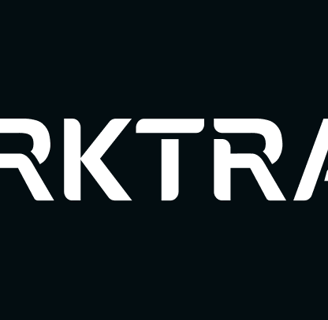A Comprehensive Guide to the General Data Protection Regulation (GDPR)
Understanding GDPR Without Reading the Original Document
5/8/20246 min read


In today's digital landscape, personal data is a valuable asset that fuels innovation and business growth. However, with great power comes great responsibility. The European Union recognized the need to protect individuals' privacy rights, leading to the enactment of the General Data Protection Regulation (GDPR). This regulation has reshaped how organizations worldwide handle personal data.
This guide will provide you with an in-depth understanding of GDPR, its key components, and its impact on individuals and businesses—without the need to wade through complex legal texts.
What is GDPR?
The GDPR is a comprehensive data protection law that came into effect on May 25, 2018. It replaces the 1995 Data Protection Directive and is designed to:
Protect the privacy rights of EU citizens.
Harmonize data protection laws across all EU member states.
Change how organizations approach data privacy globally.
Why Was GDPR Implemented?
The primary reasons for GDPR's implementation are:
Technological Advancements: Rapid technological growth made previous laws outdated.
Data Breaches: Increasing incidents of data breaches and misuse.
Consumer Trust: The need to enhance consumer confidence in digital services.
Key Terminology
Personal Data: Any information relating to an identified or identifiable natural person. This includes names, addresses, emails, IP addresses, and more.
Data Subject: The individual whose personal data is being processed.
Data Controller: The entity that determines the purposes and means of processing personal data.
Data Processor: The entity that processes personal data on behalf of the controller.
Fundamental Principles of GDPR
GDPR is built upon seven core principles that govern data processing activities:
Lawfulness, Fairness, and Transparency
Data must be processed legally and fairly. Transparency requires clear communication with data subjects.
Purpose Limitation
Collect data for specified, explicit, and legitimate purposes. Do not process it further in ways incompatible with those purposes.
Data Minimization
Only collect data that is adequate, relevant, and limited to what is necessary.
Accuracy
Keep personal data accurate and up to date. Inaccuracies must be rectified promptly.
Storage Limitation
Do not keep personal data longer than necessary for the purposes for which it is processed.
Integrity and Confidentiality
Ensure appropriate security measures to protect data against unauthorized access, loss, or damage.
Accountability
Data controllers are responsible for compliance and must be able to demonstrate adherence to GDPR principles.
Rights of the Data Subjects
GDPR empowers individuals with specific rights over their personal data:
Right to Be Informed
Individuals have the right to know how their data is collected, used, and shared.
Right of Access
Individuals can request access to their personal data and obtain information about how it is processed.
Right to Rectification
Allows individuals to have inaccurate personal data corrected or completed if it is incomplete.
Right to Erasure (Right to Be Forgotten)
Individuals can request the deletion of their personal data under certain circumstances.
Right to Restrict Processing
Individuals can request the limitation of their data processing under specific conditions.
Right to Data Portability
Enables individuals to receive their personal data in a structured, commonly used format and transfer it to another controller.
Right to Object
Individuals can object to data processing based on legitimate interests, direct marketing, or processing for research or statistical purposes.
Rights Related to Automated Decision-Making and Profiling
Safeguards individuals against decisions made without human intervention that could significantly affect them.
Who Needs to Comply with GDPR?
GDPR has a broad scope and applies to:
Organizations Within the EU
All companies operating in EU member states, regardless of where the data processing occurs.
Organizations Outside the EU
Companies not based in the EU but offering goods or services to, or monitoring the behavior of, EU residents.
Obligations for Organizations
1. Establish a Lawful Basis for Processing
Organizations must have a valid legal reason to process personal data, such as:
Consent: Clear and affirmative consent from the data subject.
Contractual Necessity: Processing needed to fulfill a contract.
Legal Obligation: Compliance with legal requirements.
Vital Interests: Protection of someone's life.
Public Interest: Tasks carried out in the public interest.
Legitimate Interests: Processing necessary for the organization's legitimate interests, balanced against the individual's rights.
2. Obtain Valid Consent
Freely Given: No coercion or undue influence.
Specific and Informed: Clear about what the consent is for.
Unambiguous: Requires a clear affirmative action.
Easy to Withdraw: Individuals must be able to withdraw consent as easily as they gave it.
3. Implement Data Protection Measures
Privacy by Design: Integrate data protection from the onset of any project.
Privacy by Default: Default settings should be the most privacy-friendly.
Technical and Organizational Measures: Use encryption, access controls, and regular security assessments.
4. Appoint a Data Protection Officer (DPO)
When Required: Necessary if the organization processes large-scale special category data or monitors individuals systematically.
Role of DPO:
Inform and advise on GDPR obligations.
Monitor compliance.
Provide guidance on Data Protection Impact Assessments (DPIAs).
Cooperate with supervisory authorities.
5. Conduct Data Protection Impact Assessments
Required for processing activities that pose high risks to individuals' rights and freedoms.
Purpose:
Identify potential privacy risks.
Implement measures to mitigate risks.
6. Ensure Transparency and Communication
Provide clear and accessible information about data processing activities.
Use privacy notices and policies that are easily understood.
7. Manage Data Breaches
Notification to Authorities: Report breaches to the relevant supervisory authority within 72 hours.
Communication to Data Subjects: Inform affected individuals if the breach poses a high risk to their rights and freedoms.
Documentation: Keep records of all breaches, regardless of whether they need to be reported.
Data Transfers Outside the EU
Transferring personal data to countries outside the EU is permissible under certain conditions:
Adequacy Decisions: Transfer to countries that the EU has determined provide adequate data protection.
Appropriate Safeguards:
Standard Contractual Clauses (SCCs).
Binding Corporate Rules (BCRs).
Codes of conduct or certification mechanisms.
Derogations: Specific situations like explicit consent, necessary for contract performance, or public interest.
Penalties for Non-Compliance
GDPR enforces strict penalties to ensure adherence:
Tier 1 Fines: Up to €10 million or 2% of annual global turnover, whichever is higher, for violations related to record-keeping, security, and breach notifications.
Tier 2 Fines: Up to €20 million or 4% of annual global turnover, whichever is higher, for violations of basic principles, data subjects' rights, and international transfers.
Recent Updates and Considerations
1. Schrems II Decision
In July 2020, the Court of Justice of the European Union invalidated the EU-US Privacy Shield framework.
Organizations must assess data transfers to the US and ensure equivalent data protection measures.
2. New Standard Contractual Clauses
In June 2021, the European Commission issued updated SCCs.
Organizations need to update existing contracts to comply with the new clauses.
3. Evolving Regulatory Guidance
Supervisory authorities continue to release guidelines on various GDPR aspects.
Organizations should stay informed about changes to ensure ongoing compliance.
Practical Steps for Compliance
1. Data Mapping and Audit
Identify: Determine what personal data you hold, where it came from, and who you share it with.
Categorize: Classify data based on sensitivity and processing activities.
2. Update Documentation
Records of Processing Activities: Maintain detailed records as required by Article 30 of GDPR.
Privacy Notices: Ensure they are comprehensive and easily accessible.
3. Revise Policies and Procedures
Data Protection Policies: Outline how the organization complies with GDPR.
Breach Response Plan: Have a clear plan for detecting, reporting, and investigating data breaches.
4. Enhance Security Measures
Access Controls: Limit data access to authorized personnel only.
Encryption: Protect data both in transit and at rest.
Regular Testing: Conduct vulnerability assessments and penetration testing.
5. Employee Training and Awareness
Education: Provide regular training on data protection responsibilities.
Culture: Promote a culture of privacy and data protection throughout the organization.
6. Vendor and Third-Party Management
Due Diligence: Assess the data protection practices of suppliers and partners.
Contracts: Include GDPR-compliant data processing agreements.
Impact on Individuals and Businesses
For Individuals
Greater Control: Individuals have more say over how their data is used.
Transparency: Organizations must be clear about data processing activities.
Enhanced Protection: Stronger rights and remedies in case of data misuse.
For Businesses
Compliance Costs: Investments in systems, processes, and training.
Risk Management: Need to manage potential legal and financial risks.
Competitive Advantage: Building trust with customers can lead to increased loyalty.
Common Misconceptions About GDPR
"GDPR Doesn't Apply Outside the EU"
Reality: GDPR applies to any organization processing the data of EU residents, regardless of the organization's location.
"Small Businesses Are Exempt"
Reality: While some obligations may be scaled based on size, all businesses must comply with GDPR principles.
"Consent is Always Required"
Reality: Consent is one of several lawful bases for processing. Others include contractual necessity and legitimate interests.
"Personal Data Doesn't Include Business Contact Information"
Reality: Business email addresses and phone numbers can be considered personal data if they identify an individual.
The Future of Data Protection
Global Influence: GDPR has influenced data protection laws worldwide, inspiring regulations like the California Consumer Privacy Act (CCPA).
Technological Challenges: Emerging technologies like AI and IoT present new data protection considerations.
Continuous Evolution: Organizations must adapt to regulatory updates and technological advancements.
Conclusion
Navigating GDPR may seem daunting, but it is a critical component of modern business operations. By understanding and implementing GDPR principles, organizations can not only avoid hefty fines but also build stronger relationships with their customers based on trust and transparency.
Remember, data protection is not a one-time effort but an ongoing commitment. Stay informed, stay compliant, and make data privacy a cornerstone of your organization's values.
Empower your organization by turning GDPR compliance into a strategic advantage, fostering trust, and driving sustainable growth in the digital economy.








